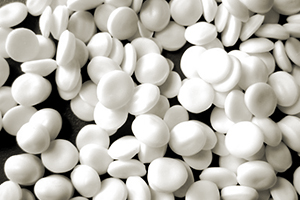Thermoplastic elastomer (TPE)

TPEs are a family of rubber like materials that combine the characteristics of rubber with the recyclability and processing advantages of plastics.
The science bit; like thermoplastics, when heated and with the application of shear force, TPEs become free-flowing and when cooled regain their original structure and stability. Unlike the chemical cross-linking which occurs in thermoset rubbers, TPE involves purely physical cross-linking, which can be reversed via the further application of heat, this makes it possible to re-use all production waste and end of life products can be easily reprocessed.
TPEs exhibit elasticity similar to that of a cross-linked rubber. Their softness or hardness value is measured on the Shore durometer scale. Our TPEs are available as ultra-soft gel like materials measuring 0 Shore A through to rigid materials measuring up to 65 Shore D, and just about every variation in-between.
It is this design flexibility, high-performance and ease of processing that has led to designers increasingly turning to TPEs as their material of choice. TPEs are used in a variety of applications in the automotive, medical, construction, electrical, appliance, packaging and industrial markets – and new uses for TPEs are being developed all the time.
There are six generic classes of TPEs
- Styrenic block copolymers (TPE-s or TPS compounds based on SBS, SEBS)
- Polyolefin blends (TPE-O or TPO)
- Elastomeric alloys (TPE-V or TPV)
- Thermoplastic polyurethanes (TPE-U or TPU)
- Thermoplastic copolyester (TPE-E or TPC)
- Thermoplastic polyamides (TPE-A or TPA)
